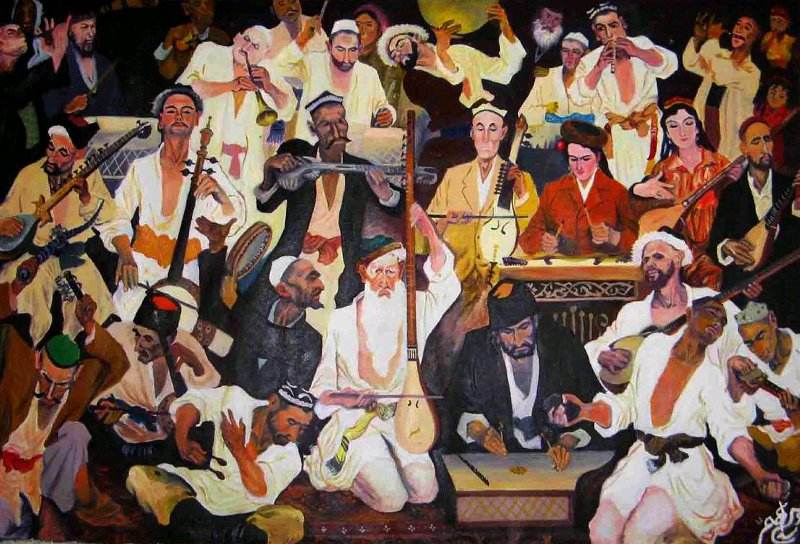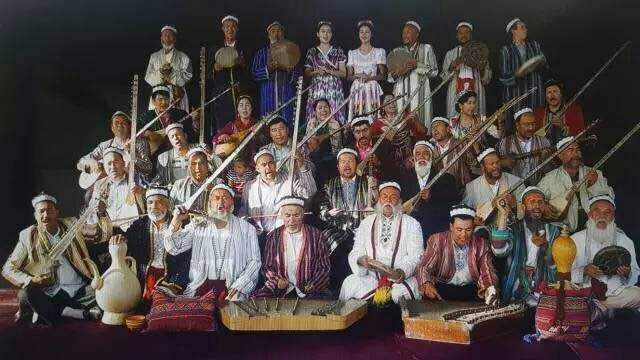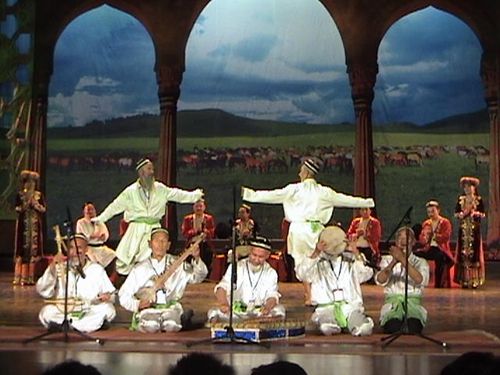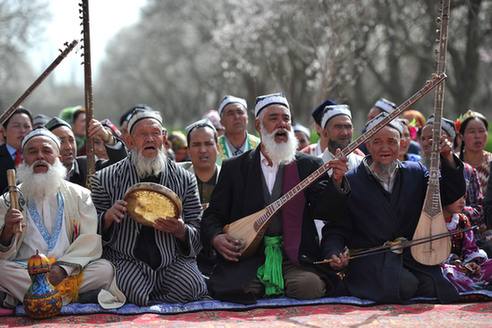Twelve Muqam in Kashgar
4 min readTracing the history of mugam, restoring the truth of history and keeping the blood vessel of history is a necessary historical mission Literature about the daqu of the han and Tang dynasties provide us with a reliable technical support for looking for the original appearance of muqam. It is a pleasant surprise that the original structure of the daqu of the Han and Tang dynasties, namely combining songs, dances and music was inherited and shown in mugam. The daqu of the Central plains gradually lost its original appearance in the harsh reality of history and lost part of its memory with dances fading out and finally lost itself.

When traditional culture lost, we have to look for them among the people. After years of turmoil, only historical texts of the daqu of the Central Plains were left, lying in the Dunhuang Grottoes, Kizil Grottoes and Kumtura Grottoes. Who could have imaged that muqam, an art form from the oasis of remote Xinjiang has preserved the living text”. As living fossil of the daqu of the han and Tang dynasties it has aroused our memory of the ised.
Performance of muqam
Time flies In the court of the Yarkand khanate(yarkent County of Xinjiang) in the 16 century were formed 16 massive divertimentos of songs and dances of the Twelve Muqam,12 of which were the best ones. till then, mugam had become a culmination of the mugam in various regions of Xinjiang, set the keynote and constantly evolved until today, exerting a profound influence on the muqam of other regions inhabited by the Uygurs in terms of form and content.

Currently all the mugam that enjoy popularity in various oasis of Xinjiang have direct or indirect connections with the Twelve Muqam. For instance, Muqam is the immediate successor of the Twelve Muqam. the other oasis due to their comparatively insulated ocation, showed their own features when assimilating the Twelve Mugam, as shown in the unique features in the combination of bands, the adoption of presided instrument and the choice of the content of words and its development.

In addition to that, muqam also has multiple elements of other music, including music of the Central plains music of the north of the gobi, as well as the national and local music from Central Asia, South Asia, West Asia and North Africa. Muqam is the unique testimony of the combination between the western and eastern musical culture along the Silk Road, and the treasure of pluralistic integration of diverse culture of the Chinese nation this pluralistic integration of diverse culture and blending nature is the expression of cultural fusion between Western Regions civilization and the traditional culture of the Uygur ethnic group. The function of arousing of the language of the Uygur Muqam that appears in celebrations or festivals or parties at the end of a year has an irreplaceable significance in the recognition of local culture and maintaining solidarity. The language system about cultural rights has become an important basis for interpreting the aesthetic psychology of the Uygurs and also plays a role in maintaining the national spirit he moving melody of muqam is not strictly balanced symmetrically, but rather in free and flowing form, with each melody containing creations, innovations and characteristics and at the same time is concise, simple, straightforward, combining the describing of objects and expressing emotions, modeling and countenance, showing various taste and momentum and forming schools of different styles.
Songs and dances in muqam
Muqam is a legend about the oasis. as a necessity and nutrition for the life of the Uygurs, it can be performed at any place: streets or lanes, teahouses or restaurants, markets of villages or townships. Anyone can dance with the accompaniment of muqam: children, gray-haired men, young men or passing Axik(roaming artists).

The twelve muqam
Yarkent County in Kashgar area is the home of amannisahan and Kadir the two famousmugam masters of the 17 century. The sorted out Twelve Mugam has close connections with these two masters. To look for muqam, Yarkent is a place we must visit told us that it had been several years since the last such heavy rain in Yarkent We had to A Once when we went to Yarkent to shoot, we encountered with heavy rain. a local village abort our plan to shoot and rest, hoping it would be sunny the next day. and it turned out to be sunny. We felt refreshing at the acclamation “It’s sunny “by our cameraman Xiao Ding As scheduled, we went to interview the local muqam master, the 63 year-old Yusup Tohti. He must have got up early and had already laid a carpet on the floor in his orchard for muqam performers to sit on








